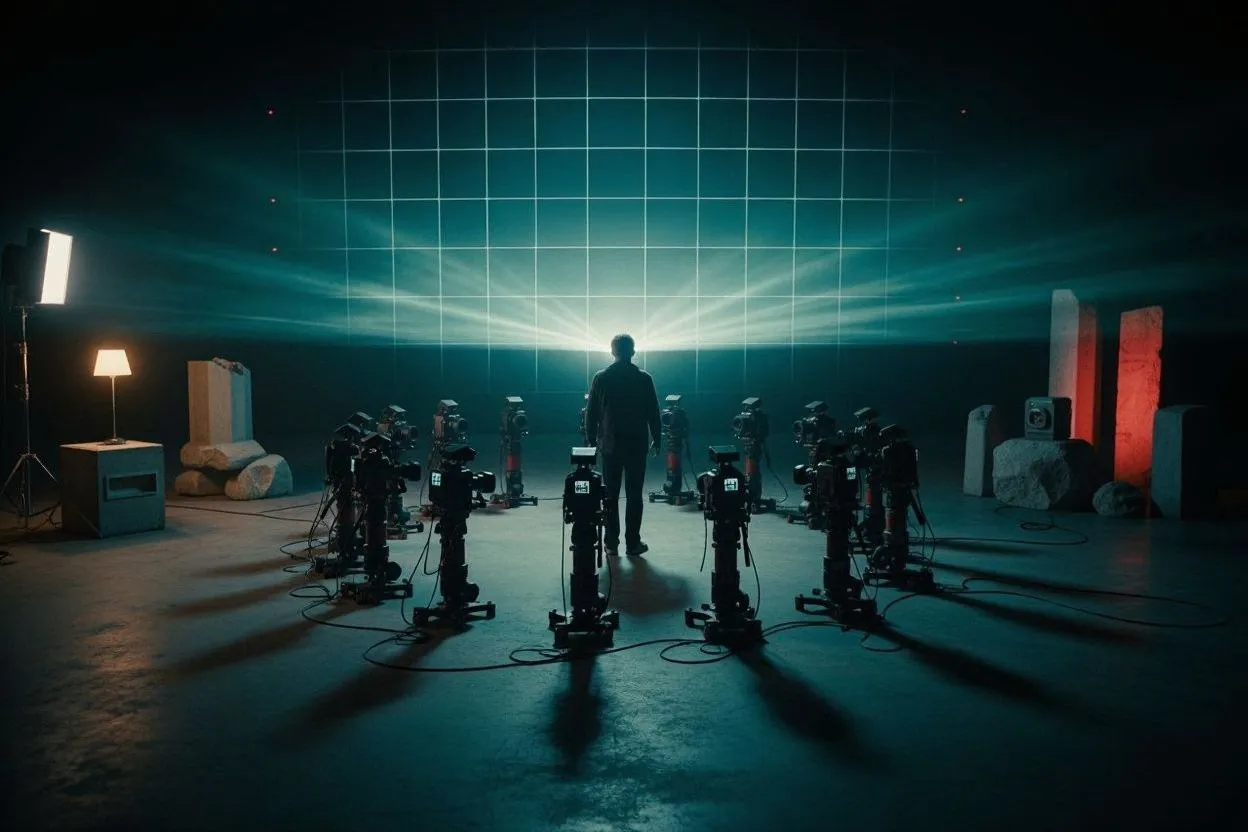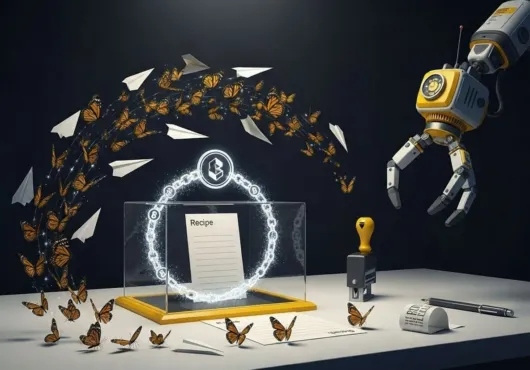“Obedient models don’t make better films. They just make your indecision obvious.”
Compliance at scale feels like power until every shot looks like everyone else’s.
Obedience ≠ taste. Now that video models follow prompts, the friction that created happy accidents is gone. Compliance converges; direction diverges.
Default is template cinema. If you outsource judgment to the model, you get perfect shots of nothing—safe, same, forgettable.
Keep misbehavior in the loop. Use constraints, contradictions, and live audits to force surprises. Don’t prompt; direct.
The upgrade nobody talks about
Video models finally “listen.” You ask for a dolly-in on a neon-lit hallway and—boom—it looks like a movie instead of a screensaver. Congrats. The floor just shot up. Also congrats: the ceiling just came down. When models become obedient, adjectives stop being art. Without taste and structure, the machine gives you glossy agreement—high-budget karaoke.
This is the Director Problem: once compliance improves, your words stop mattering and your decisions start. Not “make it cinematic.” Which beats are cinematic? Which seconds? Which shadows do we spare?
Compliance ≠ control
Everyone’s thrilled they can wrangle a shot. Fewer are tracking the path that produced it. You can “nail” a 12-second clip with three lucky runs and still have no way to do it twice. That’s not a win; that’s demo theater.
Control means constraints you can repeat:
Shot math: duration per beat, motion type per beat (pan, dolly, lockoff), allowable lens range.
Negative space: what must not appear (props, colors, audiences, era).
Style fences: 2–3 references you’re allowed to imitate, 10 you’re not.
Seed discipline: either lock seeds, or embrace drift and document it like weather.
If you can’t redo it tomorrow, you didn’t direct—you negotiated with chaos.
Prompt craft is dead; direction craft lives
Stop chasing grand incantations. Build a taste stack: five short clips that prove you see. Not “Blade Runner vibes.” Show: this glint, this pacing, this silence. Models are literal now; feed them decisions, not poetry.
Your stack beats your prompt.
- 5 refs > 500 tokens
- A shot list > adjectives
- Timing marks > “dramatic”
Prompts decorate. Direction removes.
The sameness disease
Why does so much model-video look like the same moody perfume ad? Because everybody asks for “cinematic, high detail, volumetric fog” and nobody specifies beats. You get middlebrow sludge: technically impressive, narratively airless.
Uniqueness lives in omission. “No faces; hands only.” “No camera moves; cut on motion.” “Two colors max.” That’s direction: the lines you won’t cross.
A repeatable rig (the boring power move)
Here’s the rig that makes you dangerous:
Intent line (one sentence).
What is the audience supposed to feel at second 12?
Beat sheet (12–20s total).
0–3s: Establish texture (rain on metal)
3–6s: Insert conflict (the light flickers)
6–10s: Controlled reveal (hand, not face)
10–12s: Hold (let the silence work)
Taste stack (5 refs) with explicit “steal this / not that.”
Shot constraints (lens, move, palette, forbidden objects).
Seed plan (locked or documented drift).
Receipts (take notes, or you’ll pay interest in reruns).
Do this once and you’re already in the top 5%. Not because you’re “better at prompts,” but because you’re now worse at delusion.
The receipt stack (keep you honest)
Proof Stamp: Hash your beat sheet + refs summary. Existence on record.
Reality Boundary Test: If the output touches brand or people, gate it (Speak/Write = brakes on).
Receipt Chain Inspector: After you ship, bundle the version, seed, and refs into a block you can paste anywhere.
Proof, not vibes.
Field notes (for when you’re stuck)
If it looks good but feels empty: remove a shot, extend a hold. Let silence earn rent.
If it’s pretty but generic: add a dumb constraint (only vertical moves, only reflective surfaces, no faces).
If it’s chaotic: lock seed, reduce motion verbs, split into two clips and cut.
If it “almost” nails the brief: stop adding words; add reference frames.
Minimal ethics without the sermon
Direction isn’t permission. If your piece leans on someone else’s signature style, acknowledge it or step away. Provenance is not a TOS checkbox; it’s audience trust with a receipt attached. If you can’t defend the lineage, don’t publish the lineage.
The real unlock
You don’t need fancier prompts. You need fewer moves, stronger taste, and receipts. The model now obeys. Great. Be worth obeying.



